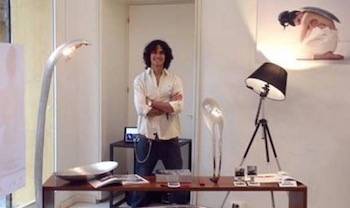Migrants Make Headlines (and the News Isn't All Bad)
The temperature had dropped below freezing. Howling in pain, a homeless migrant from Romania was giving birth in the shadow of Bernini's colonnade in front of the Vatican. Hearing her sobs, a policewoman rushed to help, stripped off her jacket and covered the woman, just as the baby arrived. The grateful mother said that without the policewoman's help, she and the baby would both have died.
Elsewhere this week two migrants from Senegal attacked an Italian policewoman ferociously in a subway station in Rome after she asked to see their documents. "In our country women are whores," yelled one, spitting at her feet, while his buddy tried to wrench away her weapon. Fortunately she was not alone, and police arrested both men.
These two incidents illustrate the problems in dealing with migrants, even though their numbers are limited in Italy when compared with other European nations.
Whereas France provides hospitality for 3.5 migrants for every 1,000 of its citizens, and Sweden, 11 per 1,000, Italy's share is officially estimated at about 1 every 1,000.
Admittedly, clandestine presences raise that figure, and it is believed that in 2015 Italy was home to 5.8 million migrants, an increase of 2.7% over 2014, for almost 10% of the total Italian population of 60.8 million, according to a report by the Ismu Foundation published in L'Espresso in December.
The good news is that, following the era's most dramatic year of migration, Italy is successfully spearheadeding the European Union toward revision of its ruling that obliges migrants who are persecuted for political or religious reasons to apply for asylum solely in their country of first entry. Some Italian officials tended to ignore the law, on grounds that it was unjust when migrants could show they had relatives waiting for them in other nations. The ruling is part of the Treaty of Dublin, which dates from the Nineties.
Debate on this crucial revision may begin as early as March. If the revision passes, responsibility for migrants into Europe will be divided among the 28 member states of the EU. The change is backed by both Germany and France, but less enthusiastically by Spain, recipient of relatively fewer migrants. In 2014, some 130,000 foreigners acquired Italian citizenship, but that same year 150,000 Italians migrated abroad. Meantime the birth rate continues to drop: in 2014 Italy had almost 600,000 deaths and just over 500,000 births. The trend continued in 2015.
Italy now has 14 centers providing immediate help for new migrants and 1,861 structures for temporary housing, plus -- as a result of overcrowding elsewhere -- a newer network of 430 additional help centers. Scattered throughout Italy are, in addition, five centers for identifying and eventually expelling mIgrants (CIE). The running costs were estimated for 2015 at nearly $100 million, 15% more than the previous year. Most of this is provided by the EU.
So what happens to the migrants after they arrive? Like the two aggressive Senegalese in Rome, some bring cultural and other problems, but a goodly number are notably successful. During the first half of 2015, 50,000 more had found work than in the same period of 2014. A few are outstanding, such as Moulaye Niang, 40, who left his native Dakar in Senegal for Venice, where he became passionately interested in making glass, especially beads.
"For me, glass was love at first sight," he told reporter Nicolo' Polesello of the Venetian magazine Il Rodotto. After years of studying on Murano, "Muranero" (his nickname) has his own shop, but also returns regularly to Africa, where he teaches glass bead-making in a school for street kids. He objects that imitation "Venetian" glassware made elsewhere iis for sale in the lagoon city.
And here are a few other successful stories:
-- After reaching Italy by boat across the Mediterranean, Suleman Diara, 29, of Mali, came to Italy hoping to earn enough to take money home to buy farm tools. But after finding work on a farm north of Rome, he set up his own yogurt production coop. "I never got to attend school in Africa," he says, "but I am proud that as an adult in Italy I learned to read and write." His start-up was a $35 loan from friends, which helped him buy his first 15 liters of milk.
-- Gustavo Aguerrevengoa, 35, from Argentina, works as a mechanic by day and, by night, creates sculptures from cast-off metal bits from Ferrari sports cars.
- Liliam Altuntas, 37, born in a Brazilian slum, is a successful baker and cake designer in Turin.
-- Reza Paya, software designer, is a graduate of the Sapienza Rome University in informatics, and co-founder and CTo at ARMNet, which helps start-up's.





































i-Italy
Facebook
Google+
This work may not be reproduced, in whole or in part, without prior written permission.
Questo lavoro non può essere riprodotto, in tutto o in parte, senza permesso scritto.